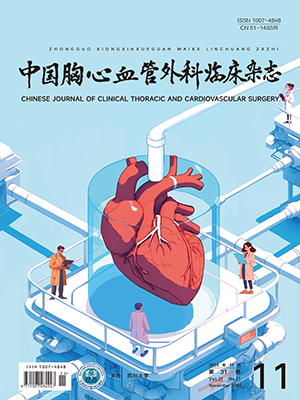Objective To evaluate the effectiveness and prospect of nontransplantation surgical cardiac remodeling for endstage cardiac valve disease by performing the remodeling operation (including anatomical and functional remodeling) after strict perioperative adjustment for endstage cardiac valve disease. Methods We retrospectively analyzed the clinical data of 31 patients, including 14 males and 17 females, with endstage cardiac valve disease who were treated with surgical cardiac remodeling operation from December 2005 to July 2009 in the 2nd Hospital of Anhui Medical University . Their age ranged from 27 to 74 years with an average age of 40.4 years. Continuous renal replacement therapy (CRRT) was carried out 3 days before surgery in all patients and intraaortic balloon pumping (IABP) was performed 1-3 days before operation in 9 patients. Among the patients, there were 13 patients of mitral valve replacement (MVR), 7 patients of aortic valve replacement (AVR), 4 patients of tricuspid valve replacement (TVR), and 7 patients of double valve replacement (DVR). At the same time, all patients underwent ventricular or atrial volume reduction operation, including 19 patients of left atrial partial excision or plication, 7 patients of partial left ventricular excision, 5 patients of left atrial and left ventricular volume reduction operation, 21 patients of partial right atrial excision, and 3 patients of partial right ventricular excision. Besides, there were 5 patients of De Vega plasty, 14 patients of annuloplasty and3 patients of coronary artery bypass grafting (CABG). The echocardiogram was used to observe the change of heart function, atrium and ventricular in patients on postoperative and follow -up period. Results After surgery, one patient died of low cardiac output syndrome, and one other patient gave -up because of incision and mediastinum infection after reoperation for hemorrhage. Twentynine patients were followed -up for 3 to 12 months with 1 case lost. During the follow- -up, 3 patients died, of whom 2 died of deterioration of heart function and 1 died of sudden stroke. In the 12th month during the follow -up, heart function of all other 25 patients showed obvious improvements with 12 classⅠ, 7 classⅡ, 3 classⅢ and 3 classⅣ heart function according to NYHA classification. At the end of the follow -up, ejection fraction (5400%±800% vs. 2500%±300%) and cardiac index [3.30±0.50 L/(min·m2) vs. 1.10±0.30 L/(min·m2)] were significantly higher than those before operation (P<0.05), whereas left ventricular end diastolic diameter (5200±1000 mm vs. 9500±1200 mm) and left atrial diameter (3900±800 mm vs. 7000±1200 mm) both decreased significantly than those before operation (P<0.05). Conclusion Cardiac remodeling operation for endstage cardiac valve disease after active adjustment and preparation can achieve similar results to operation for severe valve diseases, providing a new choice for endstage heart disease.
Citation: SHI Kaihu,XUAN Haiyang,ZHANG Fei,et al .. Nontransplantation Surgical Cardiac Remodeling Operation for Endstage Cardiac Valve Disease. Chinese Journal of Clinical Thoracic and Cardiovascular Surgery, 2011, 18(2): 121-125. doi: Copy




